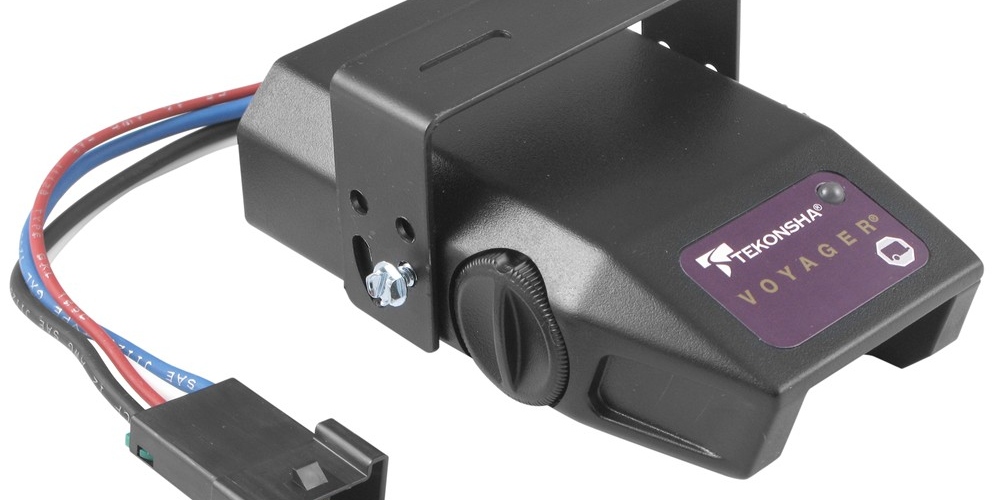An electric trailer brake controller is a device that installs in the cab of your tow vehicle and activates your trailer’s electric or electric brake controller when you hit the brakes in your tow vehicle. Many models are available, and they differ from how they look to the number of brakes they can power. But all of them can be divided into 2 main groups proportional or time delayed.
A proportional electric brake controller senses how the tow vehicle is slowing or stopping and applies the trailer’s brakes with the same intensity. So if you slam on the brakes in your tow vehicle, the controller will activate your trailer’s brakes just as forcefully. With a proportional controller, you can adjust the initial braking power and aggressiveness based on your trailer’s weight and your braking preferences.
A time-delayed electric brake controller activates the trailer’s brakes with a preset intensity (power output) and rate of application (sync), both of which are determined by you. With this type of controller, there is a delay between the time that you initially apply the electric brake controller in your tow vehicle and the time that the controller reaches maximum power output to the trailer’s brakes. However, this delay can be adjusted with the sync setting.
With a proportional electric brake controller, you can get heavy-duty emergency braking, general braking, or slow-to-an-idle braking for your trailer automatically. The intensity with which your trailer brakes are activated and the rate at which they are applied are dependent on the deceleration of your tow vehicle. This means that, unlike time-delay controllers – which send the same amount of preset power to your trailer brakes every time – proportional controllers are able to adapt to every braking situation differently. So if you slam on the brakes in your truck, your trailer brakes will activate with the same extreme intensity. And if you merely slow down as you approach a red light, your trailer will gradually brake in the same manner.
A proportional electric brake controller senses when and how your tow vehicle brakes by means of an accelerometer or an internal inertia-based sensor. The accelerometer or sensor responds to the deceleration of your tow vehicle as you brake by signaling the controller to send out enough power to your trailer brakes so that they are activated with an intensity that matches. The result is uniform braking across your towing setup. No push-pull action – just smooth, proportional braking every time.
A time-delayed electric brake controller applies your trailer’s brakes when the brake pedal in your tow vehicle is engaged. Every time you apply the brakes in your tow vehicle, a signal is sent – via the brake switch – to the electric brake controller. The controller then sends power out to your trailer brakes to activate them with an intensity set by you, at a rate determined by you. Both the amount of braking power (output) and rate of application (sync) can be adjusted to suit your preference, the road conditions, type of trailer, and size of the load. To determine which levels are best for your application, you must test out your towing setup and choose what feels best.
A time-delay controller is so named because there is a delay between the time that you initially apply the brakes in your tow vehicle and the time that the controller reaches maximum power output. Unlike a proportional electric brake controller, which activates your trailer’s brakes based on the deceleration of your tow vehicle, a time-delayed controller sends power out in the same way, with the same gradual delay, no matter the braking situation. Although this delay always exists, it can be adjusted by changing the sync setting.










Comments are closed.